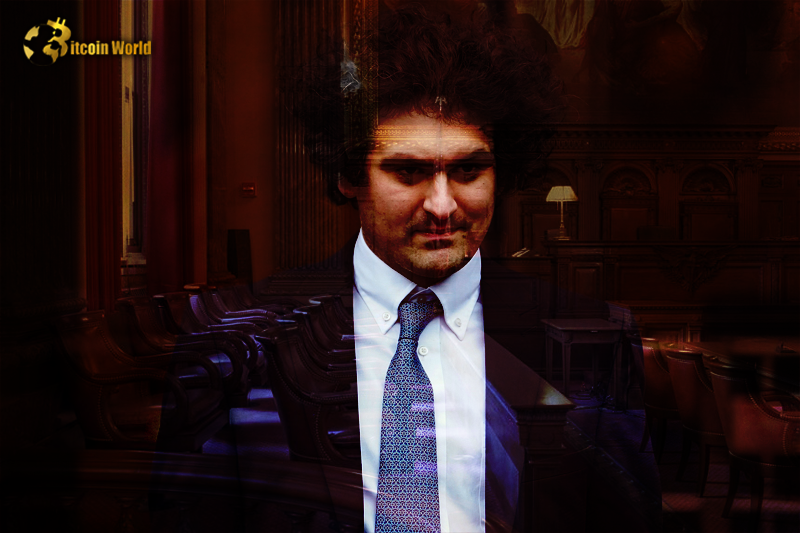The courtroom drama surrounding the FTX saga continues to unfold as Sam “SBF” Bankman-Fried, the former CEO of the now-bankrupt crypto exchange FTX, stepped back into the spotlight – this time, to defend himself. Facing a jury of 12, SBF took the witness stand in his criminal trial, a pivotal moment as the proceedings edge closer to their conclusion. Did he convince the jury? Let’s dive into the key moments from his testimony.
SBF’s Defense: What Did He Say?
For the first time, defense attorneys representing Sam Bankman-Fried presented their case, with SBF himself taking center stage. Here’s a breakdown of his key points and what he aimed to convey to the jury:
- Denial of Fraud: SBF unequivocally denied defrauding FTX customers or misappropriating their funds. This is a core element of his defense, directly addressing the criminal charges against him.
- Crypto Naivety at Alameda’s Start: Interestingly, SBF claimed to have had limited knowledge of digital assets when he launched Alameda Research, his crypto hedge fund. This could be an attempt to downplay his understanding of the risks involved early on.
- Acknowledging the Fallout: In a stark statement, SBF admitted, “FTX declared bankruptcy. A lot of people got hurt.” This acknowledges the real-world consequences of FTX’s collapse, resonating with the existing tag: ‘A lot of people got hurt.’
Alameda’s Role and the ‘Allow Negative’ Feature: A Point of Contention
Much of the questioning revolved around the relationship between FTX and Alameda Research, particularly Alameda’s operations in Hong Kong and the potential risks to FTX. Here’s what unfolded:
- Market Maker Role: SBF described Alameda as a market maker for FTX. He explained the risk management process, stating that if an account went negative, they would initiate sell-offs, relying on “backstop liquidity” for support.
- Server Upgrades and Risk Engine: SBF mentioned efforts to enhance FTX’s risk management by increasing server capacity for the risk engine. He highlighted the potential for catastrophic consequences if a large account, like Alameda’s, faced erroneous liquidation.
- The ‘Allow Negative’ Feature: This is a critical point of contention. SBF claimed he instructed Gary Wang, former FTX CTO, to stop liquidations of Alameda’s account. He further suggested that Wang implemented the controversial “allow negative” feature *without* his prior knowledge. This directly contradicts Wang’s earlier testimony, where Wang stated SBF ordered him and Nishad Singh to implement this feature back in 2019.
This “allow negative” feature is central to the allegations. Prosecutors argue it allowed Alameda to draw heavily on FTX customer funds, essentially creating a secret line of credit. SBF’s defense appears to be shifting blame towards Wang and suggesting a lack of direct oversight on his part regarding this specific feature.
What’s Next? Cross-Examination and Closing Arguments
As of the latest reports, SBF has yet to face cross-examination by the U.S. government. This will be a crucial phase where prosecutors will likely challenge his testimony, seeking to expose inconsistencies and potentially undermine his defense. Judge Lewis Kaplan had even conducted a “preview” of SBF’s testimony to ensure its admissibility, indicating the high stakes involved.
Before SBF took the stand, there was uncertainty about whether he would testify at all. However, as the prosecution wrapped up its case, the defense team signaled their intention to call a limited number of witnesses, including SBF, signifying a strategic shift in their approach.
Trial Timeline and What to Expect
The trial is rapidly approaching its conclusion. Here’s a quick look at the expected timeline:
- Closing Arguments: Prosecutors and defense lawyers are scheduled to deliver their closing arguments to the jury within the next few business days. This will be their final opportunity to persuade the jury.
- Jury Deliberation: Following closing arguments, the jury will begin deliberations to reach a verdict on the seven criminal charges SBF currently faces.
- Second Trial on the Horizon: Regardless of the outcome of this trial, SBF is scheduled for a second trial in March 2024, where he faces five additional criminal counts. He has pleaded not guilty to all charges in both cases.
The Stakes are High
The outcome of this trial carries immense weight. For Sam Bankman-Fried, it could mean years in prison if convicted. For the crypto industry, it serves as a stark reminder of the risks involved and the importance of regulatory oversight. And for the countless individuals who lost funds in the FTX collapse, the trial represents a quest for accountability and justice.
Will SBF’s testimony sway the jury? The coming days will be critical in determining his fate and the broader implications for the cryptocurrency world. Stay tuned for further updates as this high-profile trial reaches its climax.
Disclaimer: The information provided is not trading advice, Bitcoinworld.co.in holds no liability for any investments made based on the information provided on this page. We strongly recommend independent research and/or consultation with a qualified professional before making any investment decisions.


